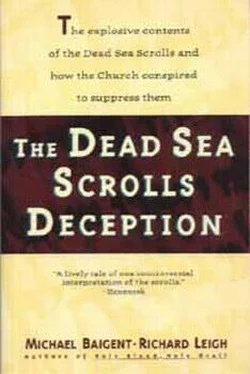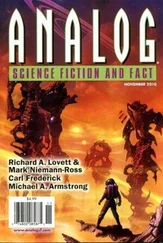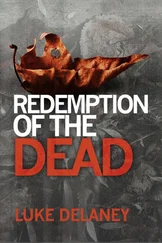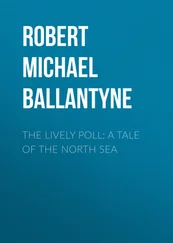The prospect, therefore, of finding anything under Qumran seemed, a priori, doomed in advance by the magnitude of what would have been entailed. But in the autumn of 1988 we chanced on a newspaper article about a ‘secret burial vault’ of possible relevance to Shakespearean scholars, found under a church near Stratford-on-Avon. What interested us about this article was the fact that the vault had apparently been located by a species of underground radar scanning system, operated by a firm based in the south of England.
The possibilities offered by SIR proved exciting indeed. It was a terrestrial equivalent of a ship-based sonar recording system. The apparatus was portable. When moved at a constant speed over the ground, it produced a computer-generated image of subterranean features. The image in turn was produced through the building up of a profile of ‘interfaces’ — that is, points at which earth or rock or any other substance of density and solidity gave way to air. The entire system was thus ideal for locating underground caves and cavities. At the very least, it would register interfaces 30 feet below the surface. Under good conditions, it could penetrate as deep as 120 feet.
The manager of the company that operated the radar proved keen to help. He had, it transpired, read and enjoyed the books we had previously published. The prospect of his equipment being employed at Qumran intrigued him. He even offered to come along on an expedition and operate the apparatus himself. As a result of this offer, Eisenman’s 1990 expedition made a special point of noting sites warranting investigation by radar. We are now waiting for permission from the Israeli government to bring the equipment into the country and employ it at Qumran.
The Dead Sea Scrolls found in 1947 were not the first such ancient texts to come to light in the Judaean desert. Indeed, there are reports of such texts being found as early as the 3rd century a.d. The theologian Origen, one of the early Church Fathers, is alleged to have made one such discovery. According to the Church historian Eusebius, Origen found several different versions of Old Testament texts, some of which had been lost for many years. He is said to have ‘hunted them out of their hiding places and brought them to light’. 2One version of the psalms, we are told, ‘was found at Jericho in a jar during the reign of Antoninus, Son of Severus’. 3This reference allows us to date the discovery to somewhere between a.d. 211 and 217.
More intriguing still is a letter dating from some time shortly before a.d. 805, written by Timotheus, Patriarch of Seleucia, to another ecclesiastic:
We learned from trustworthy Jews who were being instructed… in the Christian faith that ten years ago, near Jericho, some books were found in a cave… the dog of an Arab hunter followed an animal into a cave and didn’t return. The Arab went in after it and found a small cave in which there were many books. The Arab went to Jerusalem and told the Jews there who then came out in large numbers and found books of the Old Testament and other books in Hebrew characters. As the person who told this story to me was a learned man… I asked him about the many references in the New Testament which are referred to as originating in the Old Testament but which cannot be found there… He said: they exist and can be found in the books from the cave… 4
Similar discoveries have continued to occur through the centuries, up until modern times. One of the most famous is that of Moses William Shapira, an antique dealer with a shop in Jerusalem in the late 19th century. 5In 1878, Shapira was told of some Arabs who, on the run from the authorities, had sought refuge in what is now Jordanian territory, on the eastern shore of the Dead Sea. Here, in a cave at Wadi Mujib, directly across the Dead Sea from En Gedi, they were reported to have found a number of old bundles of rags which they tore open, hoping to find valuables of some kind. They found only a number of dark leather scrolls. One of the Arabs took these away with him and later claimed that possession of them had brought him luck. This was said to be his reason for not wanting to sell them — or for raising the price.
Shapira, who sold antiquities to European collectors and museums, was intrigued. Through a sheik with whom he was friendly, he managed to purchase what purported to be the entire corpus of material. This comprised fifteen strips of parchment, each about three-and-a-half by seven inches in size. After studying his acquisition for some weeks, Shapira realised that what he had was an ancient version of the Book of Deuteronomy, one which differed markedly from the established biblical text.
In 1883, after a number of vicissitudes and consultations with experts, Shapira brought his scroll fragments to London. He was preceded by great excitement and extensive coverage in the press. British experts pronounced the fragments genuine, and translations of them were published in The Times. The Prime Minister, William Gladstone, came to see them and discussed their possible purchase with Shapira. A sum of £1 million was apparently mentioned — a staggering figure for the time.
The French government sent a prominent scholar, one of Shapira’s old enemies, across the Channel to examine the fragments and compile a report. Shapira refused to let the Frenchman inspect the fragments closely or to handle them. The Frenchman was allowed only a cursory look at two or three fragments. He was then reduced, by Shapira’s intransigence, to spending two days looking at two additional fragments on display in a glass case, jostled by other visitors to the museum. Out of spite, and a probably justified exasperation, the Frenchman at last pronounced the fragments to be forgeries. Other scholars, without even bothering to look at the fragments, echoed this conclusion, and the affair quickly degenerated into farce. Shapira had effectively ruined himself. Repudiated and discredited, he shot himself in a Rotterdam hotel room on 9 March 1884. His scroll fragments were purchased by a London antiquarian book-dealer for £105s.
Since then, they have disappeared — though they might conceivably still turn up in someone’s attic or among the belongings of some private collector. According to the last attempt to trace them, they may have been taken to Australia with the effects of a dealer in antiquities.
A number of modern authorities — including Allegro, who made a special study of Shapira — have become convinced that Shapira’s fragments were probably genuine. Had they been discovered this century rather than last, Allegro maintained, they would in all likelihood have proved to be as valid as the material found at Qumran. 6But in the late 19th century, egos, scholarly reputations and vested interests were as much ‘on the line’ as they are today. As a result, something of potentially priceless value has, almost certainly, been irretrievably lost.
At the same time, discoveries such as Shapira’s continue to be made. Thus, for example, in the late 1970s, when we ourselves had little more than a cursory knowledge of the Dead Sea Scrolls and other such documents, we were telephoned by a friend from Paris, a collector of antiques. He asked if, on virtually no notice, we could meet him at a restaurant in London, not far from Charing Cross. Michael Baigent, who’d done much professional photography, was particularly requested. He was asked to bring a camera along — and keep it hidden.
Baigent found our associate in the company of three other men — an American collector, a Palestinian dealer and a Jordanian engineer. He accompanied them to a nearby bank, where they were ushered into a small private room and two wooden chests were produced, each locked with three padlocks. ‘We don’t know what’s in these chests,’ one of the bank’s officials said pointedly. ‘We don’t want to know what’s in them.’ The officials then left, locking Baigent and his four companions in the room.
Читать дальше












